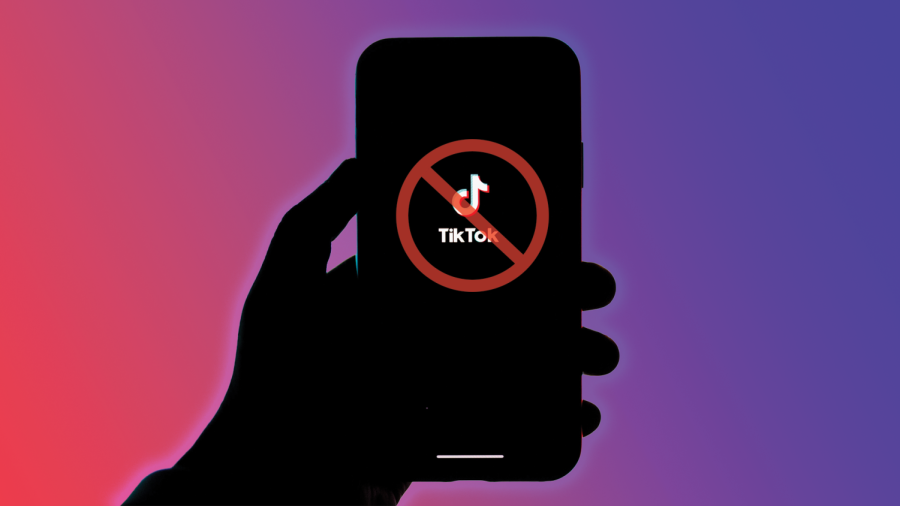Keep the College, Needs Alteration
Nicholas Coleman, Kyle Ruscigno
Although commonly forgotten, election days rarely represent the total amount of ballots cast; rather, with the advent of early voting, it can take nearly a week to count each ballot. As the final tallies for the 2016 election begin to stream in, Hillary Clinton’s popular vote lead is quickly approaching one percent over Donald Trump. Yet, as the Washington Post reports, “…there have been only five occasions when a closely divided popular vote and the electoral vote have failed to point in the same direction.” Indeed, to locate a specific instance where the popular vote and electoral vote diverged so significantly, you’d have to look back on the election of 1888.
The late period of the 19th century was beset by social and economic strain. President William Henry Harrison, who won the election despite losing the popular vote, could attribute his victory to the support of factory workers and protection of United States industry through tariffs. Additionally, the Democratic party was being assailed by a populist movement. Although separated by more than a century, significant disdain for the economy and demands to place American interests first similarly describe the 2016 election.
Periods of political turmoil are what the electoral college was designed to accommodate. Through dividing the electorate into regions, which experience vastly different economic and social realities, candidates cannot ignore issues affecting various area without risking loss. Therefore, even the smallest of populations are given representation on a national level. This leads to the creation of swing states, which have changed significantly over the years. In 1988, California voted safe Republican, while Texas once voted Democrat. These states have greatly impacted the dynamics of campaigning, shifting the focus candidates must give to various regions of the U.S.
One particular instance of this occurred in 2004, when president George W. Bush swung West Virginia, narrowly beating John Kerry. Despite the state’s relatively few electoral votes, it became a critical factor in a decisive election. Democrats who believed that W.Va. would inherently support Kerry paid a significant price for their assumptions. Indeed, the electoral college allows states to disassociate from the party they’ve previously supported. When voters lose confidence in the ruling party, they become curious of other prospects — this allows both sides to establish an argument over which proposals are best to provide relief.
Therefore, the electoral college system forces candidates to speak to those who are disaffected by national politics, rather than those who are living comfortably. The swing states of the 2016 election reflect this ideology. The Midwestern states that secured Trump’s victory — Wisconsin, Ohio, Michigan — are ones where industrial workers have been stuck in a state of economic stagnation. They are also places where the social fabric has unraveled in the face of the technological revolution. The Trump campaign recognized this trend and dedicated immense resources to campaigning in the Midwest. Clinton, who assumed that these states would vote safely Democrat, lost to her Republican opponent.
Yet, the electoral college promotes more than the shifting of swing states; alternatively, it follows the same rationale as the United States Senate. Regardless of population, each state is given two senators. If the U.S. eliminated the electoral college and instituted a direct national election, candidates would have little incentive to focus on smaller states. Rather, the population-dense east and west coasts would be given the most attention. Thus, while it’s true that California will always have more electoral votes than New Hampshire, small states have proven to be the difference in numerous elections.
Eliminating the electoral college would present a host of various issues, including a violation of the founders’ intentions. The U.S. is not a direct democracy, and the electoral college is an ingenious method of preserving this delicate balance of power. During an election, there are essentially two phases: one) Voting-eligible citizens cast their ballots for a candidate (in each state, except for Maine and Nebraska, the election is winner-take-all); and two) Appointed electoral college members to vote for the president. Although they are not necessarily bound to vote for a particular party, only one percent of the time has an elector chosen not to vote in line with the selected candidate.
The electoral college creates a race that orients itself around states, rather than large swathes of the population. Following Clinton’s devastating loss, many have insisted that a national popular vote should replace the electoral system. However, as the National Review reports, “With NPV…in 2004, the pact would have required California to appoint 55 Republican electors for George W. Bush, even though John Kerry won 54 percent of the California vote because Bush won the nationwide popular vote.” Therefore, a national popular vote would likely conflict with the consensus of voters in numerous states.
While the idea of abolishing the electoral college appeared beneficial following Trump’s victory, this would be a terrible mistake. Instead of ending a system in place for nearly two centuries, as Politico writes, “…one idea worth considering is to shift away from winner-take-all…to a proportional allocation of electors…” This solution would’ve allowed Clinton to gain small victories, rather than losing the entire electorate by a small margin. Reforming the electoral college in this manner would allow candidates to benefit equally from states. Otherwise, a shift away from the electoral college could lead to complete political turmoil.
Eliminate the Electoral College
Alisa Patience, Sean Williams
The Electoral College (EC) has recently come to the forefront of United States political discussions due to the victory of president-elect Donald Trump, who lost the popular vote by two million votes but was still elected because of the EC. While the election raised many questions regarding polling and political predictions, Trump’s decisive EC victory has led to many across the U.S. fervently asking the question, “What is the point of holding democratic elections if the process is not, in fact, truly democratic?”
The scenario was similar in 2000: after Bush lost the popular vote and won by EC, many were calling for the elimination of the EC as archaic and unnecessary. Surely, many stated, a system started hundreds of years ago when the voting population was largely white male farmers needs to be revamped given modern-day voting technology and the 21st-century’s diversified electorate.
The EC should be abolished. The system is over 200 years old. It is outdated. It made more sense and was easier to manage in its infancy when the Union was smaller and the fact that most citizens couldn’t read or write let alone keep up with politics. But in today’s world where information is easily accessible, the concept of a wise elder voice because of whom very large swaths of the population are ignored because they cannot surpass a state’s majority party has become obsolete. There have been several instances when the voice of the people has not been heard. Each time the electoral college voted against the popular vote, the Democratic Party lost. Because of the Electoral college, the Republican Party now controls the House of Representatives, the Senate, and the Presidency. For many, this is good news and cause for celebration. For others, however, the sense of disenfranchisement is real and disheartening.
Similar to 2000, this current election underscores one of the most important dangers of the EC: it can undermine citizen acceptance of the election result. If some citizens feel that the system doesn’t adequately represent them, and it ends up selecting the president in spite of the popular vote, it can divide the nation. In 2000, there was a movement encouraging electors to dump Republican elect George Bush and instead vote for the popular vote winner, Democratic candidate Al Gore. There is now a movement encouraging Trump electors to do the same thing.
Although Clinton is discouraging possible “faithless electors” from voting against their state, and the prospect of electors changing the outcome is unlikely, the mere discussion of it can undermine citizens’ faith in democracy and further divide the nation after the election. In order for the EC to be abolished, there would have to be an amendment to the constitution. If we consider that women’s suffrage, the proclamation and cancellation of prohibition, the reconstruction amendment, and the abolishment of slavery all happened by constitutional amendment, it seems a little more likely that some very positive, very beneficial democratic change might be possible via this route.
The results of the election are not all that the EC affected. In fact, if it weren’t for the EC and “superdelegates,” Bernie Sanders would likely have become the Democratic nominee and would have given Trump a populist rival who would have been difficult, if not impossible, to beat.
Although defenders of the EC argue that it is the only part of the system getting politicians to pay attention to rural areas, this isn’t really true. Because rural areas make up an insignificant portion of the EC and vote largely based on reliable traditional party lines, politicians still tend to skip rural campaign stops. The electoral college, instead, encourages politicians to focus on select swing states, resulting in politicians campaigning too much less of the country than they would have to if the election were truly democratic. Furthermore, the EC tends to discourage citizens from voting. Too often are said the words “It doesn’t matter if I vote or not because the Electoral College won’t take into account my vote anyway.” This opinion is common for a reason. The whole point of the EC is to keep ignorant people from electing an unfit president. However, this time it did nothing but help the most unfit person attain the highest office in the land. It is clearly time to abolish the Electoral College and revert U.S. elections to the more democratic popular vote.

















blue • Dec 12, 2016 at 5:53 pm
I have a very nagging feeling that a nation-wide “popular vote” might be even more easily manipulated. We just aren’t seeing the pitfalls yet. Although I had not realized it before — The Electoral College does provide a Check and Balance mechanism.
With all the stuff going on in Michigan — I think their electors aught to be free to vote whatever way they want. There should be strict consequences for states that mess with elections (57% of Detroits Optical Scanner machines broke down on Election Day). The Republican Legislature had recently passed a law that allowed to simply ignore many of Detroit’s votes.
How would the Electoral College look if it wasn’t a winner take all count in the states. The Election of a President is not a game or sporting event. Why aren’t electors assigned according the number of popular votes IN THEIR STATE. Thus, states with an even number of electoral votes, like Wisconsin, would get 5 Trump and 5 Clinton Electoral Votes — unless 3rd Party candidates were able to amass enough votes to have an Electoral Vote.
Also, paper ballot back must be required — and recounts need to be hand-counted. Otherwise our elections will be just as much of a sham as they are in countries like Russia and numerous others.
blue • Dec 12, 2016 at 5:53 pm
I have a very nagging feeling that a nation-wide “popular vote” might be even more easily manipulated. We just aren’t seeing the pitfalls yet. Although I had not realized it before — The Electoral College does provide a Check and Balance mechanism.
With all the stuff going on in Michigan — I think their electors aught to be free to vote whatever way they want. There should be strict consequences for states that mess with elections (57% of Detroits Optical Scanner machines broke down on Election Day). The Republican Legislature had recently passed a law that allowed to simply ignore many of Detroit’s votes.
How would the Electoral College look if it wasn’t a winner take all count in the states. The Election of a President is not a game or sporting event. Why aren’t electors assigned according the number of popular votes IN THEIR STATE. Thus, states with an even number of electoral votes, like Wisconsin, would get 5 Trump and 5 Clinton Electoral Votes — unless 3rd Party candidates were able to amass enough votes to have an Electoral Vote.
Also, paper ballot back must be required — and recounts need to be hand-counted. Otherwise our elections will be just as much of a sham as they are in countries like Russia and numerous others.
oldgulph • Dec 2, 2016 at 8:24 pm
A survey of Utah voters showed 70% overall support for the idea that the President should be the candidate who receives the most popular votes in all 50 states.
The National Popular Vote bill is 61% of the way to guaranteeing the majority of Electoral College votes and the presidency in 2020 to the candidate who receives the most popular votes in the country, by changing state winner-take-all laws (not mentioned in the U.S. Constitution, but later enacted by 48 states), without changing anything in the Constitution, using the built-in method that the Constitution provides for states to make changes.
All voters would be valued equally in presidential elections, no matter where they live.
Every vote, everywhere, for every candidate, would be politically relevant and equal in every presidential election.
No more distorting and divisive red and blue state maps of predictable outcomes.
No more handful of ‘battleground’ states (where the two major political parties happen to have similar levels of support among voters) where voters and policies are more important than those of the voters in 38+ predictable states that have just been ‘spectators’ and ignored after the conventions.
The bill would take effect when enacted by states with a majority of the electoral votes—270 of 538.
All of the presidential electors from the enacting states will be supporters of the presidential candidate receiving the most popular votes in all 50 states (and DC)—thereby guaranteeing that candidate with an Electoral College majority.
The bill was approved this year by a unanimous bipartisan House committee vote in both Georgia (16 electoral votes) and Missouri (10).
The bill has passed 34 state legislative chambers in 23 rural, small, medium, large, red, blue, and purple states with 261 electoral votes.
The bill has been enacted by 11 small, medium, and large jurisdictions with 165 electoral votes – 61% of the way to guaranteeing the presidency to the candidate with the most popular votes in the country
oldgulph • Dec 2, 2016 at 8:24 pm
A survey of Utah voters showed 70% overall support for the idea that the President should be the candidate who receives the most popular votes in all 50 states.
The National Popular Vote bill is 61% of the way to guaranteeing the majority of Electoral College votes and the presidency in 2020 to the candidate who receives the most popular votes in the country, by changing state winner-take-all laws (not mentioned in the U.S. Constitution, but later enacted by 48 states), without changing anything in the Constitution, using the built-in method that the Constitution provides for states to make changes.
All voters would be valued equally in presidential elections, no matter where they live.
Every vote, everywhere, for every candidate, would be politically relevant and equal in every presidential election.
No more distorting and divisive red and blue state maps of predictable outcomes.
No more handful of ‘battleground’ states (where the two major political parties happen to have similar levels of support among voters) where voters and policies are more important than those of the voters in 38+ predictable states that have just been ‘spectators’ and ignored after the conventions.
The bill would take effect when enacted by states with a majority of the electoral votes—270 of 538.
All of the presidential electors from the enacting states will be supporters of the presidential candidate receiving the most popular votes in all 50 states (and DC)—thereby guaranteeing that candidate with an Electoral College majority.
The bill was approved this year by a unanimous bipartisan House committee vote in both Georgia (16 electoral votes) and Missouri (10).
The bill has passed 34 state legislative chambers in 23 rural, small, medium, large, red, blue, and purple states with 261 electoral votes.
The bill has been enacted by 11 small, medium, and large jurisdictions with 165 electoral votes – 61% of the way to guaranteeing the presidency to the candidate with the most popular votes in the country